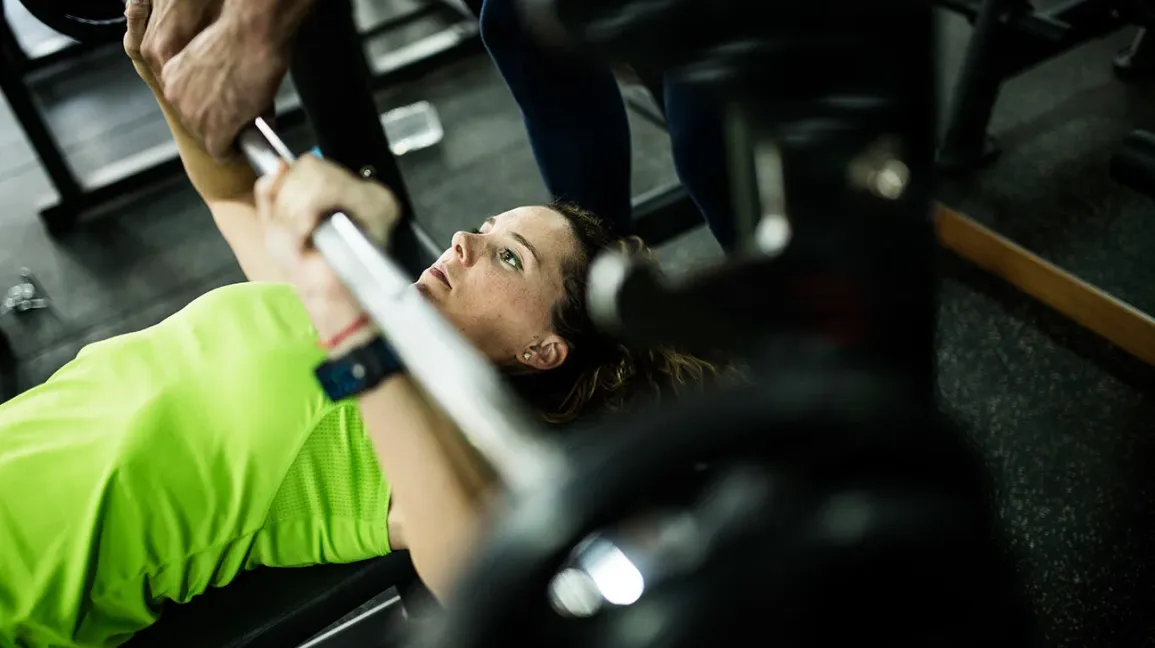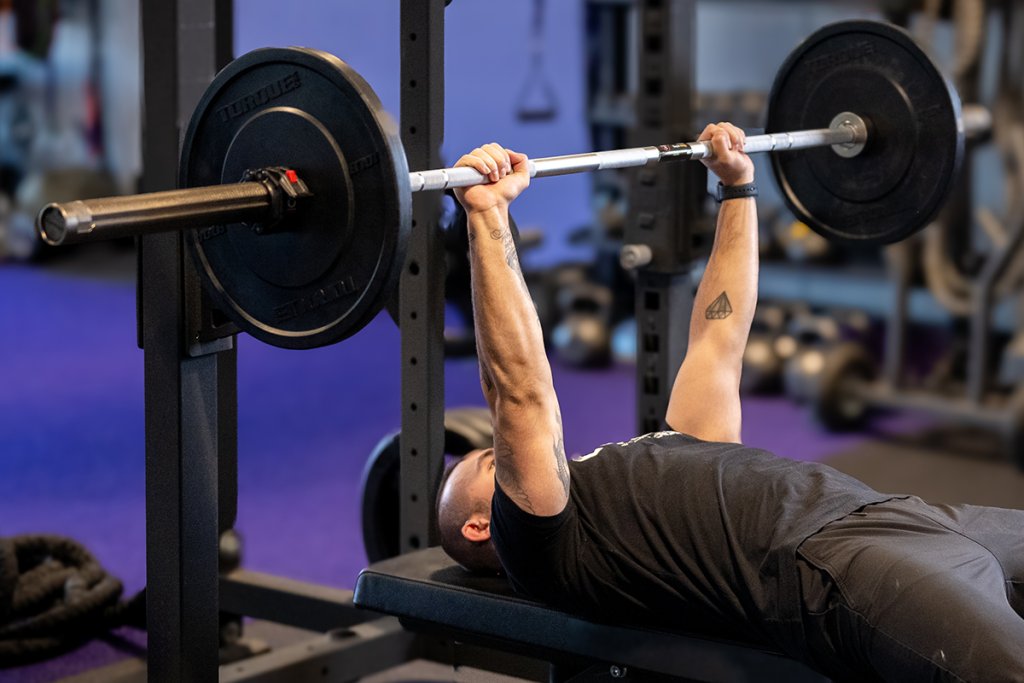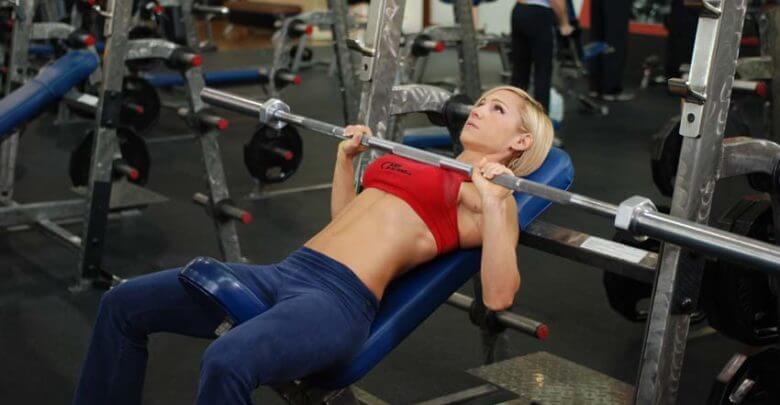When it comes to weightlifting, one of the most iconic exercises is the bench press. Whether you’re a seasoned lifter or just starting out, understanding the weight of the bench press bar is essential. It not only affects your exercise performance but also targets specific muscle groups. So, how much does a bench press bar weigh?

So, let’s dig deeper into the world of bench press bars and explore their different variations and uses.
Contents
How Much Does A Bench Press Bar Weigh?
The weight of a bench press bar can vary depending on the type of bar you’re using, but here’s a breakdown of the most common ones:
Standard Bench Press Bar:
- Weight: Usually around 45 pounds (20 kilograms).
- Description: This is the most common type of bar found in gyms and home weight sets. It’s about 7 feet long and has a smooth, straight design.
Olympic Bar:
- Men’s bar: Also typically weighs 45 pounds (20 kilograms).
- Women’s bar: Can be lighter, weighing around 33 pounds (15 kilograms).
- Description: Similar to the standard bar in length but often has a knurled (textured) grip and rotating sleeves for attaching weight plates.

Other types of bars:
- Power Bar: Heavier than standard bars, ranging from 55 to 65 pounds (25 to 29 kilograms). Designed for lifting heavier weights with more stability.
- Training Bar: Lighter than standard bars, around 22 pounds (10 kilograms). Good for beginners or warming up.
- Specialty bars: There are various curved or angled bars designed for specific exercises, and their weight can also vary.
What is a standard bench press bar?
A standard bench press bar is the typical barbell used for bench pressing in most gyms. It is a fundamental piece of equipment for weightlifters and strength trainers. Here’s what you need to know about a standard bench press bar:

- Weight: The weight of a standard bench press bar is approximately 45 pounds for males and 33 pounds for females. This weight includes the weight of the bar itself, without any additional weight plates added.
- Length: A standard bench press bar is usually about 7 feet long, which allows for a comfortable grip width for most individuals. The length may vary slightly depending on the manufacturer, but it generally falls within this range.
- Design: The design of a standard bench press bar consists of a long, straight metal bar with evenly spaced knurling for grip. The bar is typically made of steel or a similar durable material to withstand heavy loads.
- Weight Capacity: Standard bench press bars are usually designed to withstand a maximum load ranging from 500 to 700 pounds. However, it’s always essential to check the specific weight capacity of the bar you are using, as it can vary depending on the brand and quality.
- Purpose: The primary purpose of a standard bench press bar is to provide stability and support during bench press exercises. It helps distribute the weight evenly across your hands and wrists, allowing you to lift more substantial weights and target your chest, arms, and shoulders effectively.
Other types of Specialty bars
There are various specialty bars to cater to different training needs and preferences. Here are a few examples:
1. Swiss Bar
The Swiss bar, also known as the football bar or the multi-grip bar, is a versatile piece of equipment that features neutral-grip handles. This bar allows for a more ergonomic grip position, reducing stress on the shoulders and wrists. It is particularly beneficial for individuals with shoulder or wrist issues who want to perform bench press or overhead pressing movements.
2. Trap Bar
The trap bar, also known as the hex bar, is a unique barbell that has a hexagonal shape with handles on the sides. This design allows for a more natural lifting motion and a reduced strain on the lower back, making it a popular choice for exercises like deadlifts and shrugs. The trap bar is ideal for individuals looking to target their lower body muscles while minimizing the risk of injury.
3. Safety Squat Bar
The safety squat bar, as the name suggests, is specifically designed to increase safety and stability during squat movements. It features padded shoulder supports and handles in front of the body, which help to distribute the weight more evenly and reduce strain on the shoulders and wrists. This bar is a valuable tool for individuals with limited shoulder mobility or those recovering from upper body injuries.
4. Cambered Bar
The cambered bar, also known as the buffalo bar, is a barbell with a curved shape. It is designed to optimize the squat and bench press movements by altering the bar’s center of gravity. This helps to target different muscle groups and challenge your body in unique ways. The cambered bar is a favorite among powerlifters and those looking to add variety to their training routine.
Frequently Asked Questions
How do specialty bars enhance the training experience?
Specialty bars, such as the Swiss bar, trap bar, safety squat bar, and cambered bar, offer unique advantages. They can improve grip strength, target specific muscle groups, reduce strain on joints, and allow for varied exercise movements. Incorporating specialty bars into training can enhance overall performance and help achieve individual fitness goals.
Are specialty bars suitable for beginners?
Specialty bars can be utilized by beginners, but it is crucial to receive proper instruction and guidance. Beginners should focus on mastering basic barbell movements before incorporating specialty bars into their training routine. Seeking advice from a qualified fitness professional will ensure safe and effective use of specialty bars for beginners, helping them progress steadily and minimize the risk of injury.
Do specialty bars have weight limits?
Specialty bars typically have weight limits specified by the manufacturer. These limits can vary depending on the type and design of the bar. It is important to check the weight capacity of the specific specialty bar you are using to avoid exceeding its limits and potentially compromising safety. Always refer to the manufacturer’s guidelines or consult with a fitness professional for accurate information regarding weight limits.

Hello, I’m Ravindra. Over the years, I’ve immersed myself deeply into the world of fitness and health, transforming both my body and mind. Writing has allowed me to share my journey, insights, and expertise with those just starting out and seasoned fitness enthusiasts alike. Beyond just routines and diets, I believe in inspiring others to adopt a holistic approach to well-being.
